When it comes to enhancing your smile, you may come across the terms esthetic dentistry and cosmetic dentistry. While they are often used interchangeably, there are subtle differences between the two that are worth understanding. Both aim to improve the appearance of your teeth, but they have different focuses and approaches. Let’s explore these differences to help you make an informed decision about your dental care.
What is Esthetic Dentistry?
Esthetic dentistry is a broader term that encompasses various dental procedures aimed at improving the overall appearance of your teeth, gums, and smile. The primary focus is on achieving a natural-looking and harmonious smile that complements your facial features. Esthetic dentistry not only addresses cosmetic concerns but also considers the functional aspects of your teeth and oral health.
Key Treatments in Esthetic Dentistry:
- Teeth Whitening: Professional treatments to remove stains and discoloration, resulting in a brighter smile.
- Dental Veneers: Thin shells placed over the front of teeth to correct imperfections such as chips, cracks, and gaps.
- Orthodontics: Braces or clear aligners to straighten teeth and improve bite alignment.
- Gum Contouring: Reshaping the gum line to create a balanced and symmetrical smile.
- Dental Implants: Replacing missing teeth with artificial roots and crowns that look and function like natural teeth.
What is Cosmetic Dentistry?
Cosmetic dentistry is a subset of esthetic dentistry that focuses specifically on improving the appearance of your teeth and smile. The main goal is to enhance the visual aspects, often addressing issues such as color, shape, size, and alignment of teeth. Cosmetic dentistry primarily prioritizes aesthetics over functionality.
Key Treatments in Cosmetic Dentistry:
- Teeth Whitening: Similar to esthetic dentistry, this procedure aims to enhance the brightness of your smile.
- Porcelain Veneers: Custom-made shells to cover the front surface of teeth, providing a dramatic transformation.
- Dental Bonding: Applying a tooth-colored resin to repair chips, cracks, and minor gaps.
- Inlays and Onlays: Indirect fillings made from porcelain or composite materials to repair decayed or damaged teeth.
- Smile Makeovers: Comprehensive treatment plans that combine multiple cosmetic procedures to achieve a desired look.
Key Differences Between Esthetic and Cosmetic Dentistry
- Scope: Esthetic dentistry includes both functional and visual improvements, while cosmetic dentistry focuses solely on aesthetics.
- Approach: Esthetic dentistry aims for a natural and harmonious smile, considering the overall oral health. Cosmetic dentistry prioritizes the enhancement of visual appeal, sometimes using more dramatic changes.
- Treatments: While there is overlap in treatments, esthetic dentistry often includes orthodontics and dental implants, which also improve functionality. Cosmetic dentistry mainly involves procedures that enhance the appearance of teeth.
Which One is Right for You?
Choosing between esthetic and cosmetic dentistry depends on your specific needs and goals. If you are looking for comprehensive dental care that addresses both functionality and appearance, esthetic dentistry may be the right choice. On the other hand, if your primary concern is improving the visual aspects of your smile, cosmetic dentistry can offer targeted treatments for aesthetic enhancement.
Conclusion
Understanding the differences between esthetic and cosmetic dentistry can help you make informed decisions about your dental care. Both approaches offer valuable treatments that can enhance your smile and boost your confidence. Consult with a dental professional to discuss your goals and find the best solution for your unique needs.


